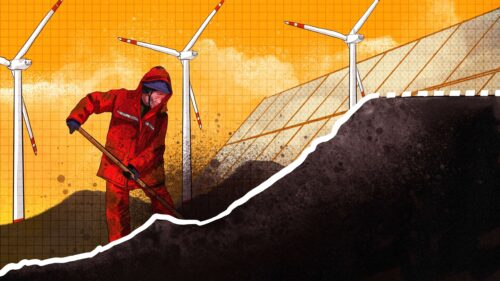A virtual power plant boom is starting in China
China needs virtual power plants — cloud-based digital controllers of electricity from various sources — to manage its complex power grid. The industry is still in its infancy, but with policy and capital support, it’s set to boom.

A virtual power plant is a power supply coordination system that digitally integrates various power sources to better distribute electricity in peak and trough periods, and optimize energy consumption. As China’s electric grid grows in complexity, so does demand for better management of the network and all its inputs and outputs.
On June 23 this year, Shanxi Province announced China’s first provincial-level virtual power plant implementation plan, which clarified the market entry process, technical specifications, and operational modes for virtual power plants. On July 11, State Power Rixin Tech 国能日新, which started its virtual power plant business in 2020, announced that its stock price had increased by 37% over three consecutive days following recent market discussions of a new virtual power plant pilot project in California by Pacific Gas and Electric Company (PG&E) and Tesla.
- State Power Rixin Tech has developed software for managing power forecasting, trading, dispatch, and storage.
- The company currently has two projects in Hebei and Shandong provinces.
The virtual power plant stock index compiled by Wind, a financial information services provider in China, has recorded a cumulative increase of 10% in July.
- Stock prices of companies on the index have risen sharply over the last few weeks. These include Kehua Data 科华恒盛, Wiscom System 江蘇金智科技, Xi’An Shaangu Power 西安陕鼓动力, and State Power Rixin Tech.
Summer is the peak season for electricity demand, and State Grid 国家电网公司, China’s state-owned electricity utility, has just announced a new subsidy for renewable energy of almost 40 billion yuan ($5.91 billion), including 26.06 billion yuan ($3.85 billion) for solar power generation, 10.51 billion yuan ($1.55 billion) for wind power generation, and 3.35 billion yuan ($495.96 million) for biomass power generation. According to a report released in June, in 2022, China’s newly installed photovoltaic capacity will exceed 100 GW, an increase of 82% year-on-year, and newly installed wind power capacity will exceed 56 GW, an increase of 18% year-on-year.
But the rapid integration of new energy into the power grid also brings volatility into the power supply system, and with great variations in demand between seasons and regions, the virtual power plant is now emerging as an essential feature to manage electricity.
The context
In 2016, State Grid established the Global Energy Interconnection Development and Cooperation Organization (GEIDCO) to coordinate the development of energy management via the internet. GEIDCO recently released a report on virtual power plants that points out that the technology is already relatively mature in the U.S. and Europe. In China, the industry has been in development for around seven years, but government policy and industry standards are still nascent, and domestic companies do not yet have a working business model.
Nevertheless, the policy framework for virtual power plants is expanding rapidly as part of China’s double carbon plans. The 14th Five-Year Plan for Modern Energy Systems, released in March this year, promotes the flexible management of energy resources via energy storage facilities and virtual power plants.
A number of provinces, including Shandong and Guangdong, are accelerating the development of virtual power plants, and there are also various virtual power plant pilot projects underway in Hebei, Jiangsu, Zhejiang, Guangdong, Shanghai, and other provinces.
China’s first virtual power plant, established in December 2019 in Hebei Province, has real-time access to 11 types of power resources with a capacity of about 226 MW. A recent report estimated that China’s virtual power plant industry will amount to 132 billion yuan ($19.53 billion) in 2030.
The takeaway
Virtual power plant companies in China still lack a viable business model and clear policy framework, but to manage its vast energy resources, China is set to rapidly catch up with the U.S. and Europe.






